Sealed cars, individual oxygen masks for each passenger, specially designed locomotives, endless racks on permafrost, dozens of deserted stations on background snowy mountain peaks - all unique Qinghai-Tibet Railway. In just five years and three and a half billion dollars in China to build highway 1150 kilometers long, will connect the "roof of the world" with the mainland.
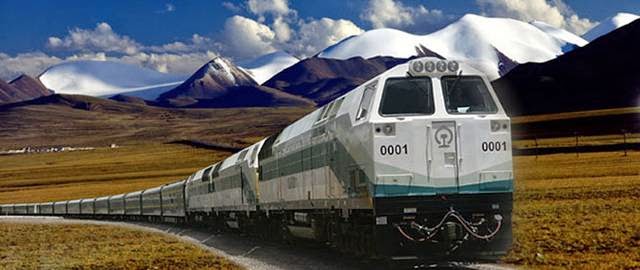 |
| World's Highest Rail Track — Qingzang Railway, China |
Back in the early 1920s, the revolutionary Sun Yat-sen in his program "Plan for Reconstruction of China" offered to build the country's approximately 100 000 kilometers of new railways, which included the line, and on the Tibetan Plateau. For objective reasons, the idea of the "father of the nation" were able to return only in 1950 when Chairman Mao. Railway project in the Tibetan capital Lhasa was approved in 1960, but its construction was frozen almost half decades - China hardly reaped "Great Leap Forward."
Only in 1974 the construction of the first section of the future highway from the capital of Qinghai Province Xining to Golmud already on the Tibetan Plateau, was resumed. 814 kilometers of the railway by the army and prison built in the five years to 1979, but passenger traffic only opened here in 1984.
Work on the second, mountainous, land to Lhasa was associated with engineering tasks particularly difficult: the builders had to work in permafrost conditions, and lack of oxygen to the same unique Tibetan ecosystem preservation which was announced the Chinese party and government of paramount importance.
Only in the beginning of the XXI century, the country reached the level of technological readiness, allowed to proceed to the implementation of large-scale infrastructure project. Moreover, the construction of the railway to Lhasa was a key step in the development of Western China Program, which aims to eliminate disparities in the development of the eastern and western regions of the country. Another important, and perhaps the main object of the PRC government has been strengthening ties namely Tibetan autonomy, control of which was re-established only in 1950, with the main Chinese territory.
According to the project, approved in 2000, Chinese President Jiang Zemin, the total length of new railway was to be 1142 kilometers. On this site was organized by 45 stations, 38 of which were automatic, unattended. Tibet Railway from Golmud rose to a height of 2800 meters above sea level to the pass Tanggula Pass (5072 meters) and then descended again to Lhasa (3642 meters).
Golmud station.
The end terminal in Lhasa.
About 80% of all new section (960 km) passes through rugged mountainous areas at an altitude of over 4000 meters above sea level, of which about 550 km is situated in the permafrost.
Construction of the railway there was a serious engineering problem. The fact that the upper layer of permafrost has a property in a short summer thaw, sometimes turning into impassable swamp. In this regard, the real threat is the progress of the soil, which could lead to deformation and fracture path. To eliminate this risk, designers Qinghai-Tibet road developed a special scheme of its devices, virtually isolating any influence line on the environment and vice versa.
The rails were placed on a special mound of boulders, buried sand layer. In the lateral projection of the mound through a perforated pipe network to provide better ventilation it, and its slopes are closed by special metal sheets that reflect sunlight and thus further hinder its heat. On some sections arranged also well filled with liquid nitrogen. All these activities are actually frozen mound under the road, preventing the heating of the upper layer of permafrost thawing and its subsequent deformation of the railway.
The rails were placed on a special mound of boulders, buried sand layer. In the lateral projection of the mound through a perforated pipe network to provide better ventilation it, and its slopes are closed by special metal sheets that reflect sunlight and thus further hinder its heat. On some sections arranged also well filled with liquid nitrogen. All these activities are actually frozen mound under the road, preventing the heating of the upper layer of permafrost thawing and its subsequent deformation of the railway.
To compensate for height differences in the areas of building a significant part of highway laid on trestles. A total of 1142 kilometers of its 675 bridges arranged, with a total length of 160 kilometers. Supports these racks are essentially a pile foundation which lie deep in the permafrost, making her seasonal thawing of the upper layers have no effect on the stability of the building structure. The gaps between the supports, columns do not impede the free circulation of air beneath them, which minimizes additional heat effect from the railway.
In addition to the technical component, an important advantage of elevated sites is the fact that they do not impede the free movement under the highway sometimes unique representatives of the local fauna. The negative effect of a foreign inclusion in Tibetan ecosystem reduced thereby to a minimum.
Lots Qinghai-Tibet road, laid on the mound on the surface of the earth, fenced throughout their length, and for the transition of migrating animals regularly laid special tunnels and bridges are built.
After completion of the Tibetan highway set several records of railway construction. At 350 kilometers from Golmud at a height of 4900 meters above sea level, was built by the highest mountain railway tunnel in the world, dubbed Fenghuoshan Tunnel (Tunnel Windy volcano).
The station is Tanggula Pass on the eponymous mountain pass was the highest mountain railway station in the world. Its surrounding mountains seem rather hills, but it is misleading. In fact, three-way Tanggula Pass located at an altitude of 5068 meters just four meters below the highest point of the whole line (5072 meters).
Although here and stop the train, in fact it is only on a single-track railway siding. The station is fully automated and controlled from Xining, where is located the central management of the entire road. No localities are not near, which, however, did not prevent the Chinese to build a fairly large station, station-worthy champion.
In most cases there is not even open the doors of the cars. For the unprepared person be at a height where the atmospheric pressure is only about 35-40% of the standard sea level, is a threat to health.
To journey through the mountainous districts with their stunning scenery takes passengers only fun for the Qinghai-Tibet road was designed by special rolling stock. American corporation General Electric has designed for highway diesel NJ2, modified for operation in high altitude, with a capacity of 5100 liters. c. each. Locomotives capable of speeds up to 120 km / h with a composition of 15 wagons. In permafrost their speed is limited to 100 km / h.
Wagons for the service roads were built in the Chinese Canadian group Bombardier plant in quantity 361 pieces (308 standard and 53 special tourist). All are virtually hermetically isolated from the environment inside the oxygen pressure is maintained close to the standard.
Despite this, seizures mountain sickness, caused by lack of oxygen, ensure occurred. To prevent them every place in cars fitted with individual oxygen tube on the model of the hospital. Tinted windows of cars with a special coating to protect passengers from excessive solar radiation, again typical of high mountains.
Standard cars are divided into the usual and we are three classes: sedentary, and reserved seat coupe. In addition, the trains have dining cars.
Bandwidth line is eight pairs of passenger trains per day (excluding freight). Currently, Lhasa is linked to regular passenger traffic not only from the neighboring "regional" center of Xining, but also with the major cities - Beijing and Shanghai. In the way of express Beijing - Lhasa is 44 hours. The cost of tickets, depending on the class ranges from $ 125 (reserved seat) to $ 200 (coupe).
Construction of the Qinghai-Tibet Railway started in 2001. About 20 000 workers, at the same time started laying line of both endpoints (Golmud and Lhasa), coped with the task of the party responsible for only five years, spending $ 3.68 billion. According to official figures, while no one was killed, despite the long-term work in not the most comfortable conditions for this.
In seven years of operation on the road carried more than 63 million passengers and 300 million tons of cargo. Annual passenger traffic increased from 6.5 million in 2006, when the line was put into operation, up to 11 million people in 2012, the annual turnover has increased from 25 million tons in 2006 to 56 million tons in 2012. Already it is clear that the new railway greatly intensified the economic development of Tibet and the neighboring province of Qinghai.
Significantly reduce the cost of delivery of goods to Tibet, including especially valuable in the mountains of energy. New impetus to the development of the tourism industry and received, though still just so anyone wanting to leave, for example, on the Beijing to Lhasa train will not work. To visit Tibet, the Chinese government as before requires a special permit, without which the train you just do not go to jail.
Skeptics believe Qinghai-Tibet Railway is only another step in the gradual colonization of a kind of Chinese autonomous region and the locomotive of development of its natural resources. Geologists have discovered in the highlands of Tibet deposits of copper, lead and zinc, raw materials, it is imperative booming Chinese industry. Environmentalists, of course, fear that the presence in the territory of modern railway only spur the Chinese government for the early development of these fields, with unpredictable consequences for the fragile ecosystem of the region.
However, while it is only unsubstantiated fears. But it is difficult to deny the popularity of the road among the Tibetans who have received the ability to easily and quickly get to the highly developed eastern regions of the country, especially among tourists, which is a fine line attraction created with typical Chinese tenacity, literally move mountains.
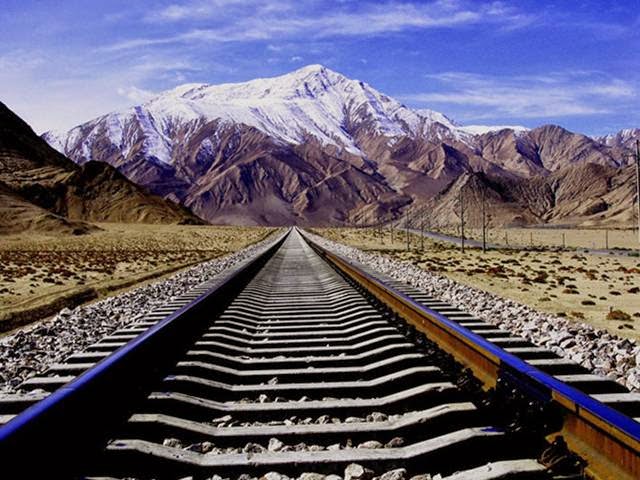 |
| World's Highest Rail Track — Qingzang Railway, China |
Source — Realt.onliner.by Tengrinews.kz














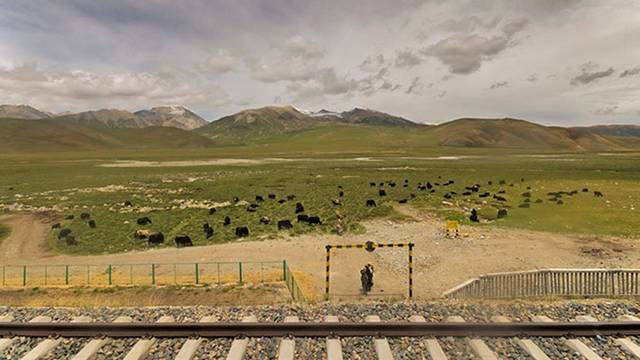


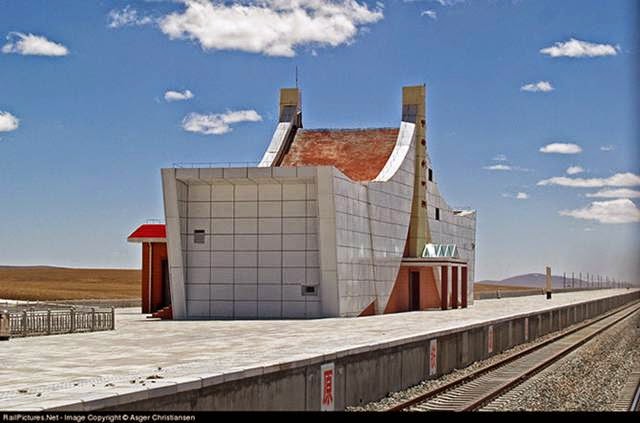



















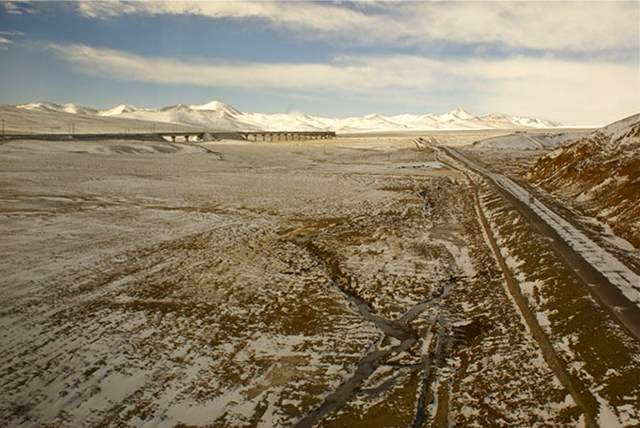

No comments:
Post a Comment